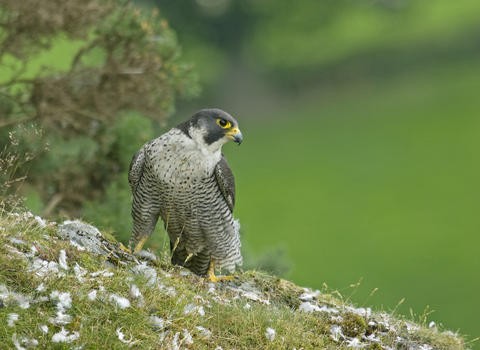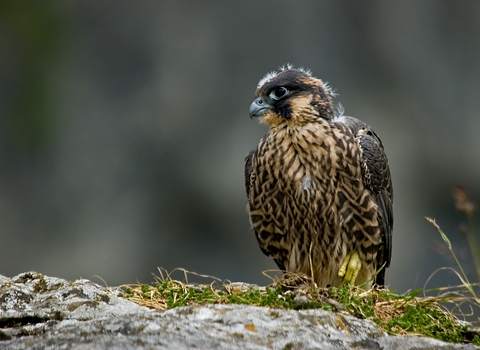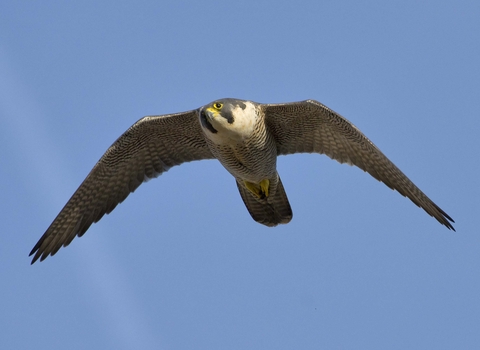
©John Hawkins

©Neil Aldridge

©Bertie Gregory/2020VISION
Peregrine falcon
Like many of our birds of prey, the peregrine falcon was so persecuted, numbers fell dramatically. Thankfully, this super-speedy flyer is now making a comeback, particularly in our towns, where it nests on tall buildings.
Scientific name
Falco peregrinusWhen to see
January to DecemberSpecies information
Category
Statistics
Length: 40-54cmWingspan: 1.2m
Weight: 670g-1.1kg
Average lifespan: 6 years
Classified in the UK as Green under the Birds of Conservation Concern 5: the Red List for Birds (2021). Protected in the UK under the Wildlife and Countryside Act, 1981.
About
Until recently, the peregrine falcon was only found in the north and west of the UK. Yet, over the last couple of decades, it has been spreading south. In recent years, it has found some unusual nest sites, including Derby Cathedral and the BT Tower in Birmingham! These tall, city structures replicate the precipitous cliff edges that it would naturally nest on.How to identify
The peregrine is our biggest falcon; it is dark slate-grey above and white below, with black bars across its chest and belly. It has a white throat and cheeks, and a strong, black moustache and mask.Distribution
Nests in North and South West England, Wales and Scotland on coastal cliffs, but is increasingly being seen throughout the country.In our area
They might be spotted anywhere near disused quarries- hunting for prey to feed themselves and their hungry chicks throughout the spring. Nest sites are kept out of the public domain in order to protect them.
Peregrine falcons are often targets of illegal persecution:
Their eggs are highly sought after by egg collectors and nests are sometimes raided by criminals using abseiling equipment to access them.
Peregrine chicks are also sometimes stolen from nests to use in unlicensed falconry.
They are often victims of poisonings, particularly around grouse moorlands and in areas with a high density of racing pigeon activity.
If you spot illegal activity at peregrine nesting sites, call 0800 783 0137.
Did you know?
Peregrines are among the fastest animals on the planet, reaching speeds of up to 200 miles per hour when 'stooping' - diving down on its prey from a great height. Prey is usually taken mid-air and consists mostly of birds like feral pigeons and collared doves.Watch
Peregrines (https://vimeo.com/447523792)
Peregrines by John Bridges
They might be spotted anywhere near disused quarries- hunting for prey to feed themselves and their hungry chicks throughout the spring. Nest sites are kept out of the public domain in order to protect them.

